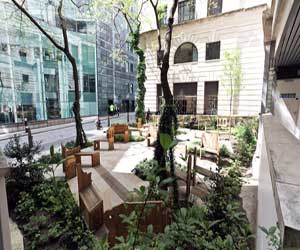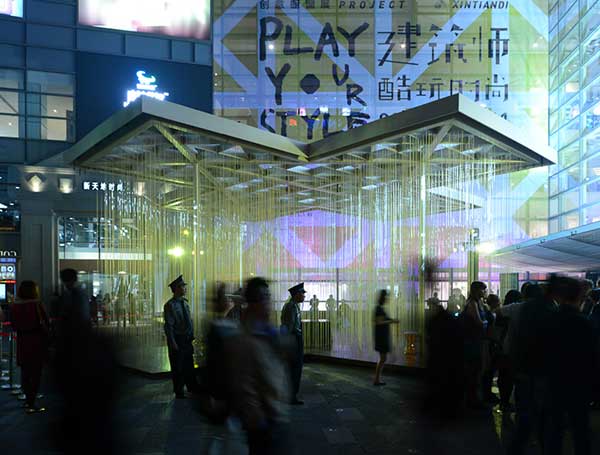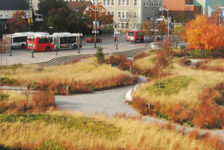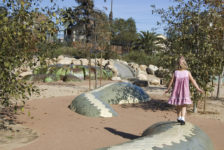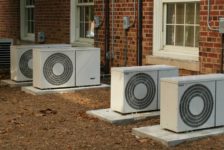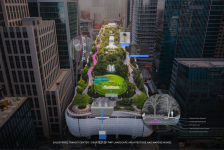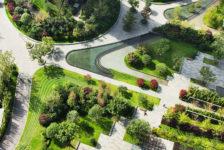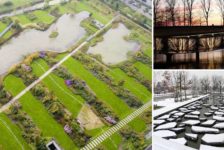What often sets certain practices apart from others is a heavy dose of innovation and a strong element of fun. Studio Weave, an architecture practice based in London, has all that in abundance: fairy tales as design narratives, The Longest Bench, salt made from tears, trumpets instead of drainpipes … the list of creative designs and interventions goes on! Yet, each project is intrinsic to its environment, landscape, and brief, resulting in each project developing a story from the genius loci of its situation. Here we ask a few probing questions to find out what Studio Weave’s principles are and how the architects come to produce such interesting, and immersive designs.
- So, who are Studio Weave?
We are an architecture practice based in Hackney, east London, and our work encompasses a diverse range of projects from furniture and art projects to buildings, landscapes, and urban design. Studio Weave is currently made up of six people – architects and founding directors Maria Smith and Je Ahn; architect Esme Fieldhouse; Part II architectural assistants Eddie Blake and Nina Shen-Poblete; and Caf Fean, who specializes in community engagement and creative project management.
- Your work goes beyond the old conception of architecture as a building; you embrace the landscape and urban surrounds a lot in your work.
For us, it seems quite normal that architects should consider buildings and the spaces between them holistically, and this is certainly something we’re very interested in at Studio Weave – one influences the other, and these relationships affect how people use a space, whether inside or outside, public or private.
- You use storytelling as way of approaching design. What influenced you in deciding to pursue a design approach like this?
We’re fascinated by the powerful role that stories play in creating a sense of place, both as a design tool and a way to engage with everyone surrounding a project, including clients, consultants and users, both grown-ups and children. We are always on the lookout for alluring narrative arcs to inform our proposals and it is imperative for us that these grow from the inherent characteristics of the site, and are never forced or overlaid where they do not belong.
- So, storytelling, fairytales, and the notion of play are all present in your work, notably in projects such as The Longest Bench or the Exhibition Furniture at the LFA. Do you believe this allows you to be more innovative in every project?
We begin each project with an extremely open mind and love working closely with everyone surrounding a project to create something unique to them. We are interested in both designing for play and designing playfully, and believe that play is important and functional, not merely an idle distraction. For us, playfulness means an open, inventive, and energetic outlook, and in all our projects we aspire to take this exploratory attitude and convey it to all those involved; this often takes the form of storytelling. We’ve found this approach useful in building an environment that enables creative problem solving – stories and words can help in cross-disciplinary conversations.
- Hugh Pearman (architecture critic of The Sunday Times and editor of the RIBA Journal, the magazine of the Royal Institute of British Architects) has commented that you are “psycho-geographically inclined.” Is he right?
We’re flattered by Hugh Pearman’s description. I suppose we’ve interpreted it as meaning that in our projects we develop designs that re-imagine buildings and spaces as the best versions of themselves, rather than levering in something completely new. We look to the clues embedded in the site already and relish the freedom this brings to explore all possibilities for future transformations.
- So, what’s next for Studio Weave?
We have a couple of big public realm projects, which are gathering pace – one surrounding a busy rail station and the other looking at market regeneration. At Studio Weave, we’re particularly interested in working on design projects for buildings and the public spaces around them – thinking about how buildings are used and programmed, and the role of events and communications in such projects.
No doubt, whatever appears next on the horizon from Studio Weave, it will be a project I can’t wait to discover. Website: www.studioweave.com Interview conducted by Sonia Jackett Published in Blog


